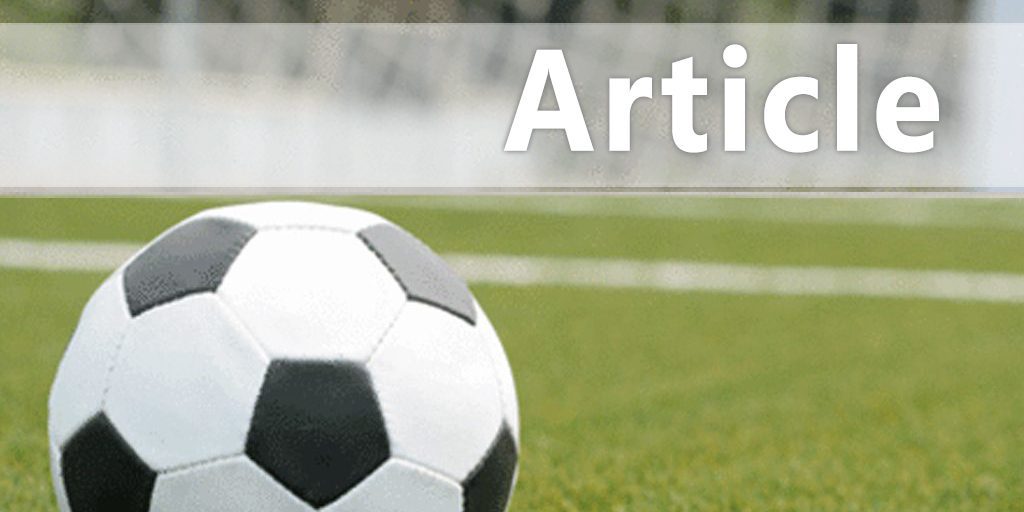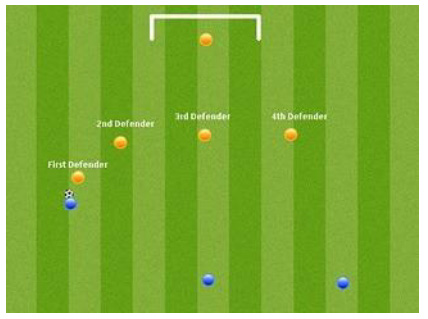| How to Defend Properly as a Soccer Team |
| Provided by: Amplified Soccer Athlete
Many popular and successful teams rely on sharp incisive passing play and movement to unsettle the defensive shape of their opponents and exploit the space created with good effect. This style of passing play is incredibly attractive to watch and really epitomizes soccer's title as "The Beautiful Game". However even this seemingly irresistible style of attacking can be suppressed by a well lead, organized and hard working defensive unit. The BPL's Chelsea are well versed in the art of defending as a pack and winning the ball back quickly before countering with pace to devastating effect. So, How is it Done Effectively? First things first, defenders are a unit; if you move up the field you do so together and vice versa. If Defenders move independently or lose concentration you leave pockets of space for opponents to play in, leaving you vulnerable for teams to play in behind you and the last direction you want to be looking as a defender is towards your own goal. There are many defending drills to work on organization and communication. Successful defenders must be a compact unit; if an attack is coming down your right side then you must concentrate your defense to that side and the closest defender becomes the 1st Defender, moving down the line the players become 2nd, 3rd and 4th defenders assuming, of course, you are playing a back 4. The ball is the immediate danger, if there is an opposition player open and lingering on the opposite wing he isn't an immediate danger and doesn't need to be man marked.
Defenders 3 and 4 must remain alert to off the ball runs in keeping a good balance and shape. If the ball gets played across to the opposite side the defense must shift their focus and close down space on the other side and the defensive order changes to suit. To put this to your players another way discuss this scenario; If your left back is pressing the ball on the left side of the field and your right back is floating in the space near the opposing teams' right winger, who is going to fill that gulf between the center defender and the right back? That area is right in front of goal. One or two quick passes and the opposing team are in on goal because of the gap created. Keep that defensive unit tight and compact in dangerous areas and around the ball. Now How to get the Ball Back? Defending is a game of patience and composure. Don' t over commit to winning the ball back; if you take a chance and miss the ball you risk putting your team in unnecessary danger as we mentioned before, you don' t want to be chasing back towards your own goal. Now we will break it down further to help you understand the basic rules of how to defend properly as a team. The First Principle of Defending: Pressuring/Delaying Delay the attacker once you have moved to meet them and apply pressure, slow them down and be an object between the ball and the attacking player' s destination at all times. The player will have to change their pace to move past you, be alert to changes of pace and try to take the ball from them if the chance presents itself. Don' t take a chance and jump into a challenge. This role of delaying the attack is giving your team mates chance to get numbers back behind the ball, to regroup as a unit and set about winning the ball back.
The Second Principle: Depth A second defender should be close by, providing the delaying defender with some depth. If the attacker manages to beat the first defender, this defender can now move in to take the ball. If the chance to take the ball doesn't present itself then the second defender becomes the first defender and delays, giving the first defender a chance to recover and provide more depth. This will slow down the attack even more and maintain good team balance. Remember players must communicate changes in role throughout, one lapse in concentration or miscommunication can lead to two players defending the same player, leaving an opposing player unmarked. Miscommunication can just as easily mean nobody moves to pressure the player in possession, often players will just assume the other person should go to the ball. No matter how obvious it may be, It' s crucial to let your team mates know what is happening so they can take up good positions around you. If the attacker passes the ball away don' t immediately chase the ball. The player you were defending might be making a dangerous off the ball run. Follow your man and remain organized. The Third Principle: Balance The Third (and fourth) defender must remain alert to off the ball runs. They must be careful to keep the defensive shape and balance the defense so they don't leave themselves exposed while not being directly involved in winning the ball back. If the ball is passed to an attacker near them, they must be ready to close down space and block any shots on goal. The third and fourth defenders can play a vital role in stifling opponent's attacks by shutting down passing channels and passing lines. Forcing the player on the ball to find a different option or try to force a pass. Forcing players to try passes increases the chances of cutting out the pass.
When delaying an attacker you should look to force the player to move in one direction, do this by offering them a direction to move into, be sideways on and keep your weight even so you can move quickly towards the ball or move to take the ball away if a player tries to move around you. Move the player onto their weaker foot or towards a side line to limit their space and gain the upper hand. By isolating the player in possession and limiting their space you are more likely to force errors. Make Play Predictable To conclude how to defend properly as a team, defending needs good organization to work well. There is always a 'voice' in every successful defense - a leader to organize defenders and keep the unit working well to repel attacks. Just because you aren't the first defender confronting the attacker it doesn't mean you can watch the game happen, you still have a vital role to play to make sure to attacking team do no score. Small lapses in concentration can be all it takes to concede a goal. Each player is an essential cog in a defensive unit. Communication breeds trust, and trusting the players around you to perform their task will allow you more freedom in your own defensive role. A well organized defensive unit can be the building blocks for a strong and successful team that will concede less goals. |









